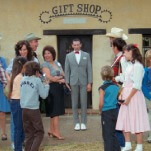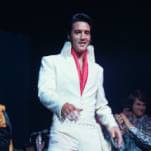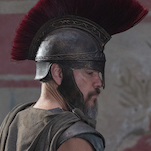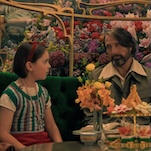Less attention has been given to the destruction left in its wake. For family and friends of Teresa Halbach, the commercial success of the series dropped them into a level of hell where they’re forced to re-live the trauma for as long as paid Netflix subscribers want to hear about it. Each episode of the second season ends with a long list of the people who either refused to talk to Demos and Ricciardi or who never responded to their requests; it’s understandable at this point that the multi-column lists includes several Halbachs. One college friend of Halbach’s, Chris Nerat, was willing to be interviewed, though it’s unclear how close he was to the victim or her family, and whether he was ever intended to be used as anything other than a narrative foil to the case for Avery’s and Dassey’s innocence.
Demos and Ricciardi abandon any pretense of balance and tip their hand early in season two: Steven Avery and Brendan Dassey are both innocent, and if you believed otherwise three years ago, there’s a lot of new evidence to change your mind. Boxes and boxes of it, in the possession of Kathleen Zellner, Avery’s post-conviction attorney, who claims the largest number of overturned convictions of any private lawyer in the U.S. Zellner is unswayingly confident, a legal force unto herself, and she’s pretty damn clear that she doesn’t represent guilty parties—and if somebody’s guilty and lying about it to her, she’s going to find out. The Halbachs don’t need to worry, she says, because if Avery is the killer, she will fail. And that’s where Making A Murderer: Part 2 takes a hard turn into fuel for Reddit detectives, replete with blood splatter experts, body-burning experts, brain fingerprinting, and forensics galore.
Among the recent spate of popular true-crime works, Making A Murderer is unusually intimate. The podcasters of My Favorite Murder typically dig into older cases; The Jinx’s Robert Durst, a wealthy real estate heir suspected of at least three murders, is easy to loathe; even season one of Serial provided a little more distance by virtue of being audio-only. The forensics of Halbach’s murder case are fascinating stuff, but it also means learning in some detail about the most efficient way of burning bodies, and which way a blood drop will flow down a hatch when a body is thrown in the back of a car. And not just any body: The body of a 5-foot, 6-inch, 135-pound woman with short hair, represented by a mannequin with weights taped to it. The mannequin is thrown repeatedly into the back of a Toyota RAV4, the same make and model that Halbach drove, as Zellner and her team examine the blood droplets after each new throw. It’s a difficult scene to watch, though Zellner never flinches.
Several unbeloved characters from season one resurface for interviews here, including a smug, sniveling Len Kachinsky (Dassey’s court-appointed attorney) and the wet-voiced Ken Kratz, the prosecutor in Avery’s case. Demos and Ricciardi flatten these subjects to the point of turning them into supervillains, setting up for a battle royale against Zellner, who has accused Kratz of at least four separate Brady violations, or withholding evidence from the defense team that would have deprived Avery of a fair trial.
If Making A Murderer is primarily focused on proving the innocence of Steven Avery—a seed that was sown three years ago—it’s because the show and its filmmakers genuinely believe in him and in the justice system. It’s a surprising through-line, this kind of enduring optimism in an institution that has allegedly failed both Avery and Dassey many times over. Defense attorneys are a force for good in this story, and Zellner and Dassey’s new lawyer, Laura Nirider, believe, truly, in their clients’ innocence. And they believe just as strongly that, for all its complications, the U.S. institutions of justice will root out the truth.








































